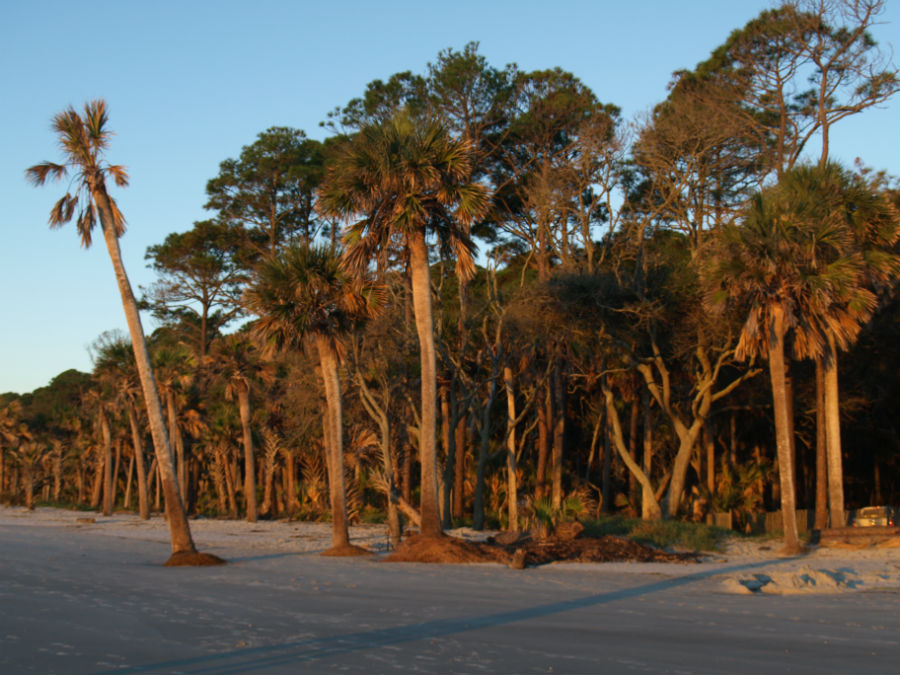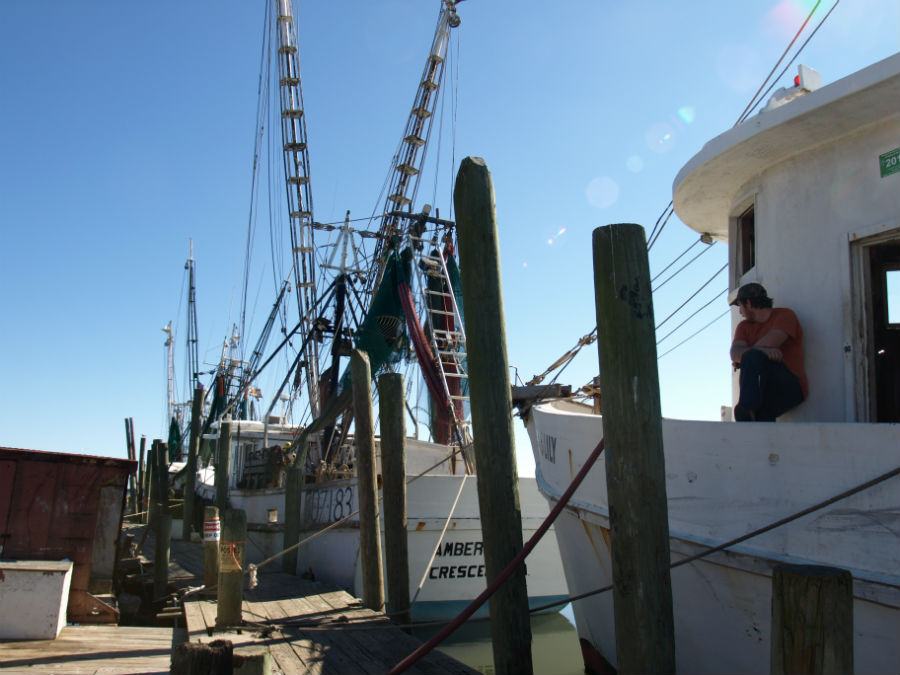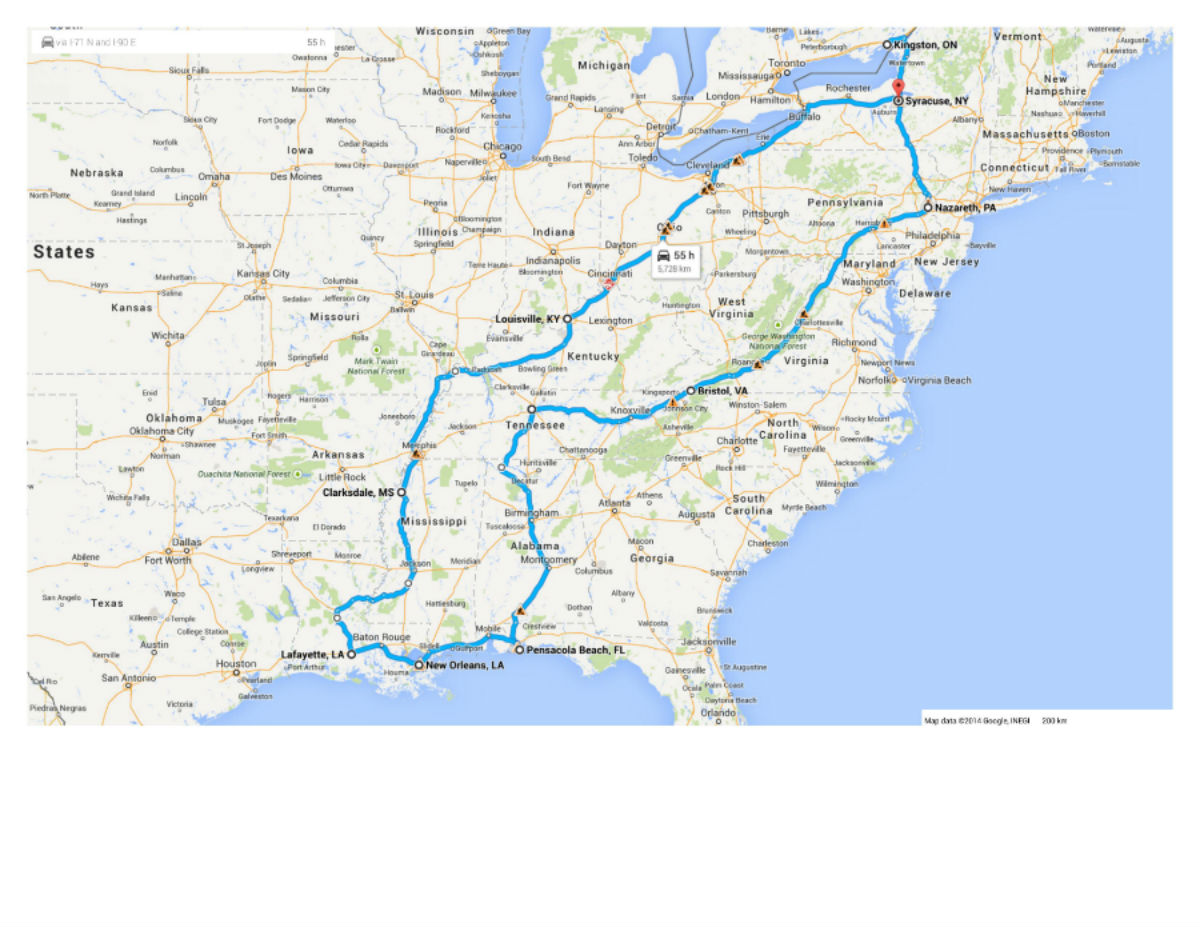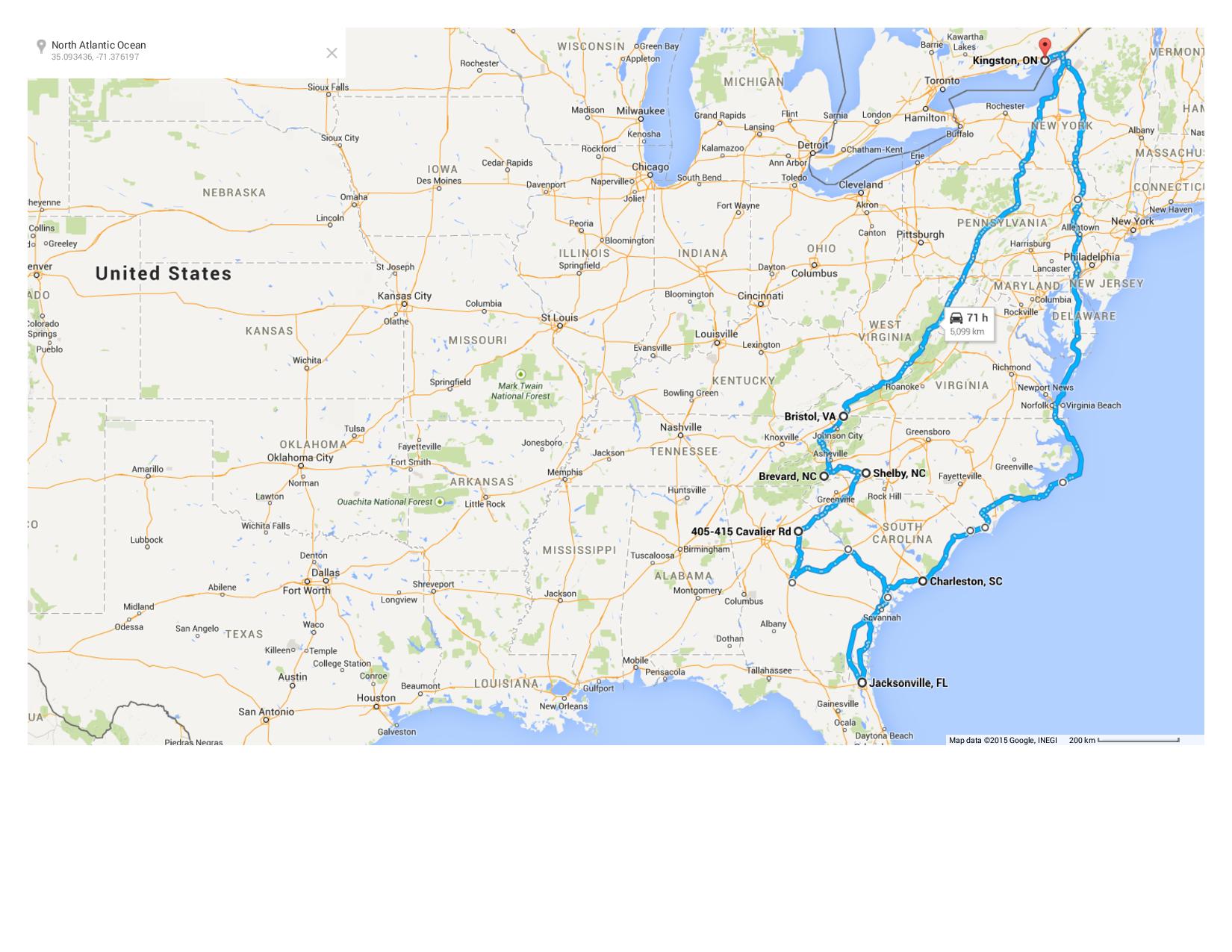Spoiler alert: There is nothing we didn’t like about the Lowcountry just outside Beaufort called the Sea Islands, a collection of small islands huddled together, separated by tidal creeks and connected by short bridges.
The definite highlight was our stay at beautiful Hunting Island State Park – we loved it so much that we extended our visit for an additional five days. We’d set our alarm to a pre-sunrise hour, walk five minutes to the beach and be there for the sunrise over the Atlantic. In the distance there were shrimp boats (no doubt harvesting our dinner that evening). Rigby was fascinated by the small fiddler crabs scuttling along the sand (South Carolina beaches are on-leash dog friendly). The beach is long and luxurious, anchored by a lighthouse at one end and a sweeping curve of sand at the far reach. The early morning sun cast a warm glow on the palmetto palms that line the back of the dunes. It set up each day perfectly.
In addition to the natural beauty of the Lowcountry, this region is steeped in history.
There is a long tradition of shrimping. We’d stop at Gay Fish Co. (just at the bridge from St. Helena Island to Hunting Island) to buy the freshest shrimp we’d ever tasted. Half-a-dozen shrimp boats were tied to the rickety docks. Inside, the woman weighing our daily ration told us their docks stood in for the Alabama coastline in the filming of the shrimping scenes in the hit movie, Forrest Gump. On the wall there’s a framed photo of Tom Hanks and Gary Sinise playing out a scene from the movie.
We visited the Penn Center Historic District, preserving the Gullah community on St. Helena Island. The Gullah people – the descendants of enslaved Africans – are known for their unique culture and traditions imported from West Africa (including the weaving of beautiful sweetgrass baskets). Before bridges were built, these islands were isolated and the culture was protected and thrived. Gullah culture is all over the Sea Islands, but the Center is the only spot where the buildings remain intact and protected as a National Historic Site. When the program at the site opened it was the first school in the nation to provide formal education for freed African slaves; a path to liberation. Over time, the focus shifted to civil rights and social justice issues. Now, the Center is a part of the National Park Service’s Gullah Geechee Cultural Heritage Corridor, preserving this unique culture, traditions and heritage.
One of our favourite meals was at the modest Gullah Grub Restaurant. Our lunch started with squares of rich cornbread, still warm from the oven, and glasses of “swamp water” (a mix of sweet tea and lemonade, called an Arnold Palmer on the mainland). Traditional Gullah dishes are based on whatever is seasonally available – rice, tomatoes, okra, fish. We ate local: a starter of she-crab soup, barbecue ribs and fried chicken with a side of collards doused with vinegar for some extra tang.
We’ll be back . . . again and again and again.











